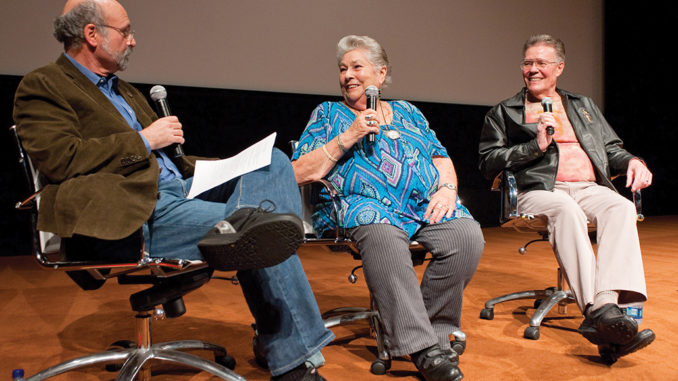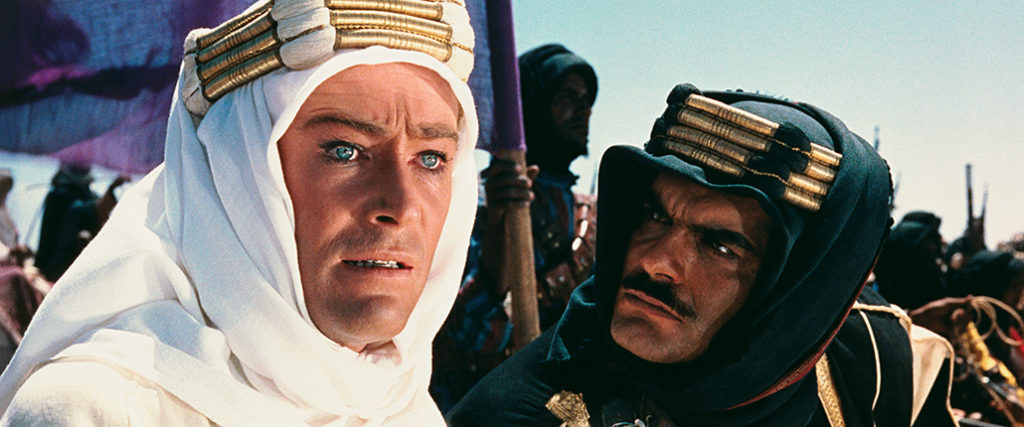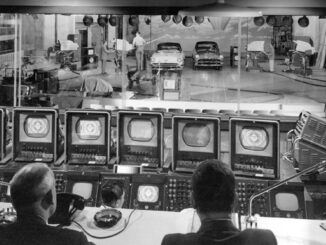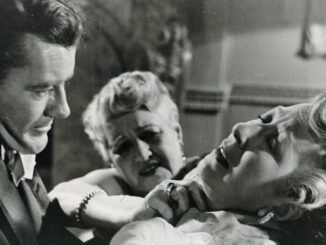
Last October, the Academy of Motion Picture Arts and Sciences held several nights dedicated to the art and craft of picture editing. One of those evenings was entitled “Anne Coates: Profile of an Editing Master,” which featured clips from many of her films. Following are a selection of Coates’ observations and comments on some of those films.
On Ronald Neame’s The Horse’s Mouth:
I think this was my first big break. People always think it was Lawrence, but this was the first project that took me from smaller, ordinary films to something special. We cut the picture to Lieutenant Kijé by Prokofiev; it fit wonderfully. The composer wrote a very modern score, but we threw it out.
On Peter Glenville’s Becket:
Peter Glenville was given two weeks to do his director’s cut before producer Hal Wallis took over the picture. Hal saw the dailies at noon and made choices, and Peter saw them in the evening and made different choices. I always cut with the director’s choices and Hal never seemed to notice, so that was all right. I got on fine with Hal. He cut out a few scenes, but it’s basically Peter’s cut that you see. If Hal Wallis had spent more money on the film, it could have been a really epic picture, because it had a wonderful script.
On Jack Gold’s The Medusa Touch:
As a producer, I enjoyed working on the script and the casting and locations, which you don’t do as an editor. Jack was a wonderful director; I did five films with him. He and I had very little money to make this film––$4 million––and a big cast: Richard Burton, Lee Remick and a lovely French actor, Lino Ventura. We went through the script and cut everything out that we thought we would not shoot anyway, because we wanted every single penny to be up on the screen. That saved an awful lot of money. I wasn’t going to edit it originally, but I just love cutting.
On Hugh Hudson’s Greystoke:
The film was very difficult to cut. I was on it for 17 months. The first cut was four or five hours, and we had to get it down to two hours and ten minutes. Hugh Hudson is a brilliant and underrated director, but very difficult to work with. He didn’t cooperate with the studios; he was cutting out the stuff they wanted in and vice versa.
We previewed the picture in Seattle, and we were running about two-to-three hours. It got the worst marks of any picture I’ve worked on in my life. The next night, we were previewing in Oakland, and we just took reel one off and started with reel two––and no one even missed it!
Frank Oz’s What About Bob?:
It was a very funny film that was great fun to cut in many ways, but there were a lot of problems; mainly, Bill Murray and Richard Dreyfuss didn’t get along. Bill Murray is great to work with, except that he never does or says the same thing twice. It’s quite stimulating to cut him, I have to say.
On Wolfgang Petersen’s In the Line of Fire:
Wolfgang Petersen is really enthusiastic and encourages you to try things. We pared that film down and down. I think it’s his best American picture. Clint Eastwood was not involved at all and never interfered with the cutting. The scene where they are eating ice cream on the steps was very tricky to cut because they were never both eating ice cream at the same moment, and Clint was different on every take.
On Adrian Lyne’s Unfaithful:
I went to Adrian Lyne and said that I couldn’t make the love scene work at all. I couldn’t get into it and it was proving very difficult. He said try doing something different, and I got the idea of inter-cutting it with her thoughts on the train. The script wasn’t at all written that way. That sequence was fun to do and it became Adrian’s show scene.

Copyright Columbia Pictures
On David Lean’s Lawrence of Arabia:
David Lean was an exceptional man; he brought out the best in you. I was fairly young and he was a very famous editor. I felt very insecure around him, and he just couldn’t understand that. “If you believe in it, Annie, you go for it,” he would say. Sometimes I would come up with an idea, and he would say, “That’s the most stupid thing I’ve ever heard in my life.” But then a day or two later, he’d come back and say, “You know that idea we were talking about that didn’t really work? I’ve been thinking about it, and out of that we can do this, that or the other…” He always encouraged me to come up with ideas; he had a lot of confidence in me.
The scene of Lawrence blowing out the match that jumped to the wide shot of the desert? We discovered that cut. It was written as a dissolve from him blowing out the match to the sunrise. And in those days, we just cut the two pieces of film together and drew the dissolve line on it with a chinagraph [grease pencil]. But when we took it into the screening room, it was a direct cut, and we saw the possibility of it then and there. It didn’t quite work, so David played with it some more, gave it back to me and said, “Make it perfect.” I just took two frames off the outgoing shot, and that’s how it is today.
If you were doing that shot in the Avid today, you might put the dissolve in immediately, and you never would have had the chance to see it as a direct cut. We did a lot of direct cutting in Lawrence, because I had suggested to David, before we started editing, that we look at the Nouvelle Vague French cinema. He took a look, loved it and did it better than they did.





